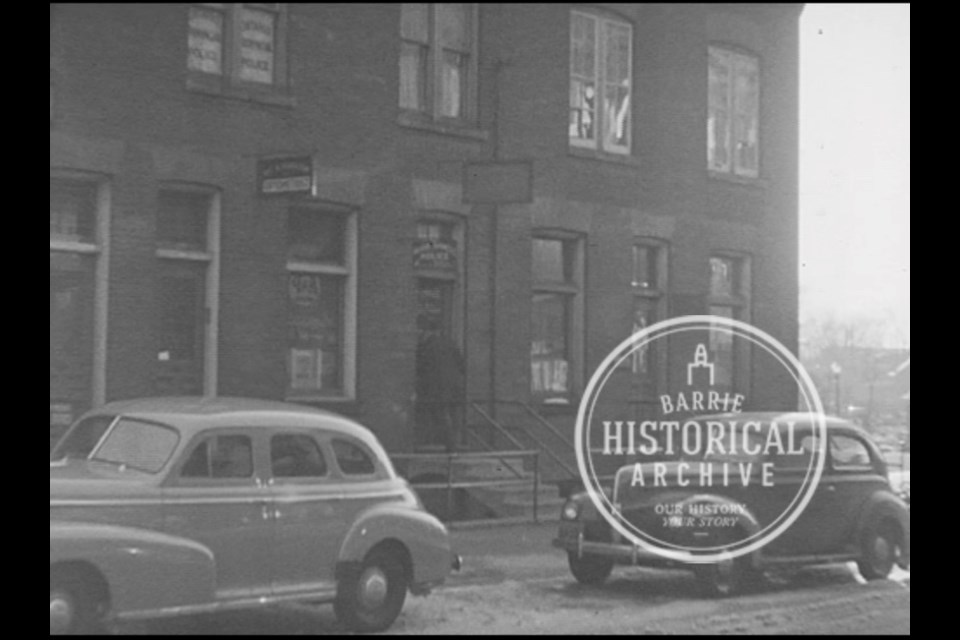As a child, I attended Honourable Earl Rowe Public School in West Gwillimbury Township. At the same time, Earl Rowe Provincial Park near Alliston was our family go-to swimming and picnic destination.
So, the Rowe name has always been a prominent one in my recollections, and also in the minds of many others throughout the region. Yet, I had never heard of this particular incident, one that led to several high-profile trials during the height of Earl Rowe’s political career.
William Rowe had been farming in Iowa for a short while when, in 1889, he returned to Ontario and married his West Gwillimbury sweetheart, Isabella Watson. Soon after, the pair went to the U.S., where Earl Rowe, and his elder brothers, Watson and Russell, were born.
The family returned to Canada in 1896 and life for them centred around the community of Newton Robinson afterward.
Earl began his political career at an early age. At 23, he dove in local politics and served as Reeve of West Gwillimbury for two years before moving on to the provincial level. Rowe, a Conservative, was MPP for his riding before taking the next step; Ottawa. Earl Rowe had a very long run as local MP and finished his public service life as lieutenant governor of Ontario.
Naturally, the powerhouse politician’s name constantly appeared in local newspapers. In the summer of 1930, that was especially true as election candidate Rowe was seeking another term in Ottawa as representative for Dufferin-Simcoe.
On June 30, one month before election day, a shocking event hurled a second Rowe onto front pages throughout the region. Earl’s elder brother, Russell Rowe, had been shot.
Charles Russell Rowe, a 38-year-old bachelor, was an accountant who had recently left the employ of the Byers Lumber Company of Toronto. During the two weeks leading up to the event, Russell Rowe had been visiting family at Newton Robinson.
Earlier in the evening, Russell had borrowed Earl’s car to visit friends in the village of Bond Head. When he returned to his brother’s home just after 1 a.m., someone was lying in wait. The assailant waited until Russell walked away from the borrowed car and then fired two shots, one of which shattered Russell Rowe’s shoulder.
Earl Rowe was roused from his sleep by the gun blasts and found his brother at the front door, bloodied. After discovering that his phone lines had been disabled, Earl sent two men to Cookstown to fetch a doctor.
Dr. W.J. Scott treated the severely injured man and, in the end, the life and the arm of the victim were saved. But why was Russell Rowe shot and by whom?
The early assumption was that Earl Rowe must have been the intended target. Afterall, Russell had driven Earl’s car to Earl’s house, and this took place in the middle of a federal election.
However, there were whispers. One of the friends Russell Rowe had been visiting in Bond Head was Edith Carter of that village. There were rumours a certain local farmer was keen on Carter and had taken a spite to Russell Rowe for showing the lady some attention.
Insp. J.H. Putnam of the provincial police wouldn’t say much but he did confirm that the attack was believed to be connected to some sort of jealousy.
Russell Rowe had no idea who had attacked him but he felt that he would recognize him if he saw him again. The shooter had stood only six feet from Rowe and the first shot had missed him but illuminated the shooter’s face for a brief second.
In early October, the police brought Russell Rowe to the farm of Gordon Bradley. Rowe immediately identified him as his would-be killer and 33-year-old Bradley was arrested.
It was revealed Russell Rowe was engaged to Carter and had been for three years at the time of the attempt on his life. Carter acknowledged Bradley had often given her a lift home from church but, if he had more intense feelings toward her, she had been unaware of them.
In early 1931, Bradley was tried in front of Justice Sedgewick but the jury could not agree and a new trial was set for the fall of the year. That trial, too, failed to reach a verdict and a third was scheduled for the spring of 1932.
I’m sure all of the concerned parties were relieved when the entire case was thrown out in February 1932. Bradley became a free man, Earl Rowe savoured his landslide re-election victory and Russell Rowe finally married Edith Carter in 1934.



